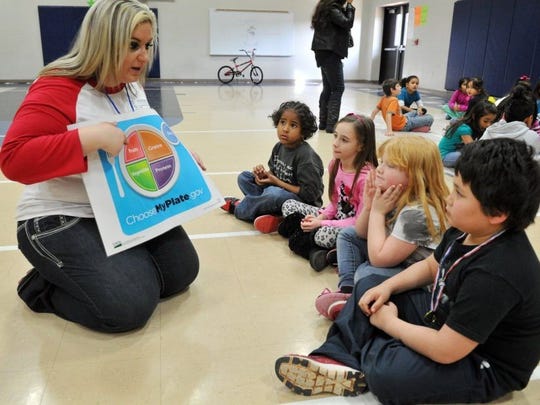
Claire Kowalick, Wichita Falls Times Record News Published 2:57 p.m. CT Nov. 22, 2019
CONNECTCOMMENTEMAILMORE
New data indicates that efforts to reduce childhood obesity may be making progress in some populations.
The Robert Wood Johnson Foundation (RWJF) released the Special Report: Obesity Rates Decline Among Young WIC Participants this week, which includes the latest information from the Centers for Disease Control and Prevention, makes policy recommendations and shares success stories from around the country about communities that are helping children grow up at a healthy weight.
The report shows the obesity rate among 2- to 4-year-olds that are in the Special Supplemental Nutrition Program for Women, Infants, and Children (WIC) in Texas dropped more than 2 percent from 16.9 percent in 2010 to 14.6 percent in 2016.
There are 623,558 infants and children that participate in WIC in Texas and the state has the 18th highest obesity rate for children ages 2 to 4 who are participating in WIC. Nationally, this age group of children has an obesity rate of 13.9 percent. This rate has declined in recent years in 41 states and territories.
“These widespread declines in obesity rates are encouraging,” said Jamie Bussel, M.P.H., a senior program officer at RWJF. “They show real progress in our efforts to help all children grow up at a healthy weight. Changes made to WIC in the last decade may be having a real impact—we should make sure it’s reaching everyone who’s eligible.”
WIC is a federally funded program that provides information and nutritional assistance to low-income pregnant mothers, infants and children under age 5. They also offer breastfeeding support, healthcare and social-service referrals. WIC served nearly 7 million people in 2018, including about half of all infants born in the United States.
Some of the policy recommendations from the report include:
- Congress should increase WIC funding to extend eligibility to postpartum mothers through the first two years after the birth of a baby, and to children through the age of 6 to align with participation in school meal programs.
- Congress should fund the WIC Breastfeeding Peer Counseling Program at its full authorized amount of $90 million to ensure mothers have access to critical supports.
- Congress should continue to support and fund efforts to streamline and modernize WIC services through technology, including achieving the congressional mandate for all states to achieve WIC Electronic Benefit Transfer (EBT) by 2020.
- USDA should maintain the scientific integrity of the WIC food package process as USDA undertakes the Congressionally mandated 10-year cycle revision.
- The Centers for Medicare and Medicaid Services should continue to support and reimburse WIC for its role in lead screening.
WIC has undergone many changes in the past decade that are seeming to have a positive impact on health. Foods approved by WIC was updated in 2009, to include more fruits and vegetables, whole grains and lower-fat milk.
Following these changes, studies have shown that stores are carrying healthier options and WIC participants are eating healthier diets. Many states have also adopted improved childcare-nutrition standards.
Recommendations in leading health organizations are following the lead of WIC by suggesting non-sugary drink choices. Guidelines on healthy drink options – such as choosing water or milk over beverages with added sugar – has been a part of the WIC program for a number of years.
“Research shows that early childhood is when nutrition habits are developed. These habits can last all through adulthood and have a big impact on health,” said Megan Lott, M.P.H, RD, Deputy Director of Healthy Eating Research, which convened the expert panel that developed the recommendations. “For the first time, we have a set of guidelines that parents, caregivers, healthcare professionals and policymakers can use as a blueprint to make informed decisions about which beverages can help children achieve optimal health.”
The new beverage recommendations were developed by the Academy of Nutrition and Dietetics, American Academy of Pediatric Dentistry, American Academy of Pediatrics, and the American Heart Association under the leadership of Healthy Eating Research, a leading nutrition research organization, and with funding from RWJF.
Youth obesity rates in 2016, were the highest in Alaska at 19.8 percent and lowest in Utah at 7.9 percent.
See the full report at: https://stateofchildhoodobesity.org/obesity-rates-decline-among-wic-participants/.
Claire Kowalick, a senior journalist for the Times Record News, covers local government, military and MSU Texas. If you have a news tip, contact Claire at ckowalick@gannett.com.
Twitter: @KowalickNews
CONNECTCOMMENTEMAILMORE
Read or Share this story: https://www.timesrecordnews.com/story/news/local/2019/11/22/texas-sees-drop-child-obesity-rates-lower-income-families/4270623002/